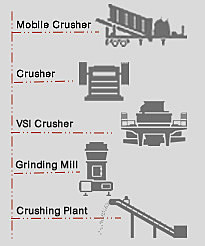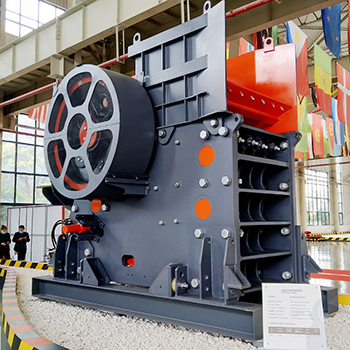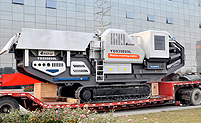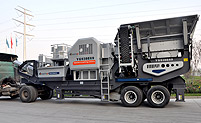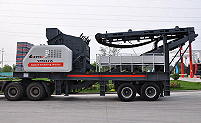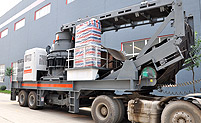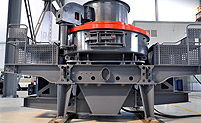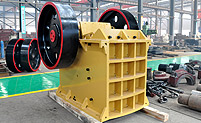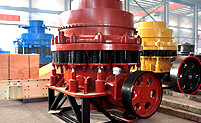Home > frequently asked questions > Detailed explanation of the advantages and disadvantages of common screening equipment necessary for crushing, screening and mineral processing operations
Detailed explanation of the advantages and disadvantages of common screening equipment necessary for crushing, screening and mineral processing operations
Date: 22/04/20 Author: kefidmobilecrusher.com
In the production of crushing, sand making and beneficiation, the screening process is an indispensable and important part, and the screening equipment is also various. So how to choose the right product in different applications? This article introduces the characteristics of 8 types of screening machines, and the screening equipment suitable for different links in the sand and gravel production line.
Commonly used screening equipment mainly includes vibrating screen, fixed screen, roller screen and so on.
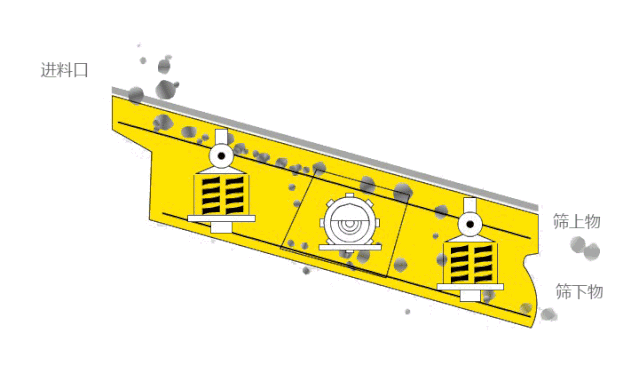
1. Fixed sieve
The fixed screen is a screening machine with a fixed screen surface. It is placed obliquely, and the material is inclined to the high end. Without any external force, the ore passes through the screen hole by its own weight and is divided into the under-sieve material smaller than the screen hole and the screen material larger than the screen hole. Two levels of granularity. The screening efficiency of the fixed screen is low, and it is easy to block when the viscous water content is high, and the operation is labor-intensive. However, due to its simple structure, easy manufacture, no need for power, and low cost, it is widely used in crushing operations. It can be divided into grid sieve and bar sieve (rod sieve): Grid screen: mostly used in the upper part of raw ore receiving silo and coarse crushing silo, mainly used to control ore particle size; bar sieve: mostly used for pre-screening before coarse and medium crushing.2. Roller screen
The screen surface of the roller screen is composed of many rollers arranged in parallel and staggered with screen discs on them. The gap between the adjacent rollers and the discs is the screen hole of the screen. The roller is rotated by a sprocket or gear drive, and its rotation direction is the same as the material flow direction. Roller screen is often used for the screening of coarse-grained materials. It is suitable for screening soft and medium-hard materials. The advantage is that it does not block the screen.3. Vibrating screen
Commonly used mining vibrating screen is not a certain type of screening equipment, but a type, usually inertial vibrating screen, self-centering vibrating screen, eccentric vibrating screen, heavy-duty vibrating screen, circular vibrating screen, linear vibrating screen, etc. Below we focus on comparing the characteristics of these types of vibrating screens. Inertial Shaker The vibrator is installed on the screen box. As the screen box vibrates up and down, the instability of ore feeding will affect the screening efficiency, and the processing capacity is small, which is suitable for medium and fine classification. Self-centering vibrating screen (uniaxial vibrating screen) When the self-centering vibrating screen is working, the screen vibrates at a high speed, but the spatial position of the grooved pulley remains unchanged, so it is called a self-centering vibrating screen. It has the same working principle as the pure inertia vibrating screen, but the pulley and the transmission shaft are concentric in structure, the center of the pulley remains unchanged during the working process, and the motor runs smoothly. The advantages are simple structure, easy manufacture, strong screen surface vibration, and high screening efficiency; Suitable for mid-level grading. The screen surface of the self-centering vibrating screen has two layers, one layer and two layers. There are also two types of installation methods: hanging type and seat type. The application is more extensive. Eccentric vibrating screen The eccentric vibrating screen relies on the high-speed rotation of the eccentric drive shaft to vibrate the screen, so it is called an eccentric vibrating screen. The eccentric shaft directly drives the screen frame to make a trajectory movement in the vertical plane with an amplitude equal to twice the eccentric distance. The size of the sieve hole can reach 100~250mm, which is often used in the pre-screening process, or the first screening process of sand and gravel materials. The advantage is that the structure is firm, the amplitude does not change when the feeding amount changes, the vibration intensity is large and constant, and the screen hole should not be blocked;4. Heavy-duty vibrating screen
It is suitable for screening large and dense ore. The screening efficiency is higher than that of the fixed screen, but the equipment investment is high, and it is suitable for large block classification.5. Circular vibrating screen
The vibrating screen with a circular trajectory, the screen surface is inclined, the material stuck in the screen hole can jump out, the screen surface is not easy to block, and it is suitable for large, medium and fine grading.
6. Linear vibrating screen
The screen surface is installed horizontally, the movement trajectory is straight, the screen surface is large, the amplitude is strong, the screening efficiency is high, and the processing capacity is large; but the structure is complex, the price is high, the energy is high, and the amplitude adjustment is difficult. It is suitable for the screening of coarse, medium and fine-grained aggregates, and can also be used as dewatering and desliming equipment during wet production. Among these 8 types of vibrating screens, circular vibrating and linear vibrating screens are more common. So many screening equipment, how to choose different stages of sand and gravel production line? Generally speaking: Stage I screening: fixed screen (low screening efficiency, low equipment investment), heavy-duty vibrating screen (high screening efficiency, high equipment investment), roller screen (medium screening efficiency, high equipment investment); stage II screening : Circular vibrating screen (high screening efficiency, low equipment investment), linear vibrating screen (medium screening efficiency, low equipment investment); Stage III screening: circular vibrating screen (high screening efficiency, low equipment investment), linear vibrating screen Screening (medium screening efficiency, low equipment investment); inspection and screening: circular vibrating screen (high screening efficiency, low equipment investment), linear vibrating screen (medium screening efficiency, low equipment investment). It can be seen from this that in addition to the first stage screening, the second stage screening, the third stage screening, and the inspection screening adopt the circular vibrating screen or the linear vibrating screen, but because the former has higher screening efficiency, the circular vibrating screen can be selected.PRE: Jaw Crusher Working Principle and Discharge Thickness Adjustment Method
NEXT: What is Hydraulic Cone Crusher
NEXT: What is Hydraulic Cone Crusher

